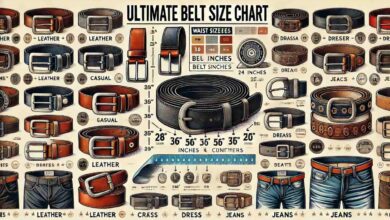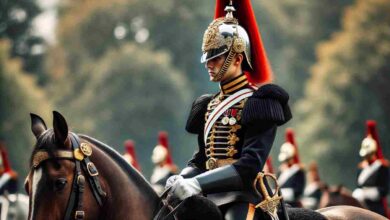Breastplate: Where Protection Meets Medieval Artistry
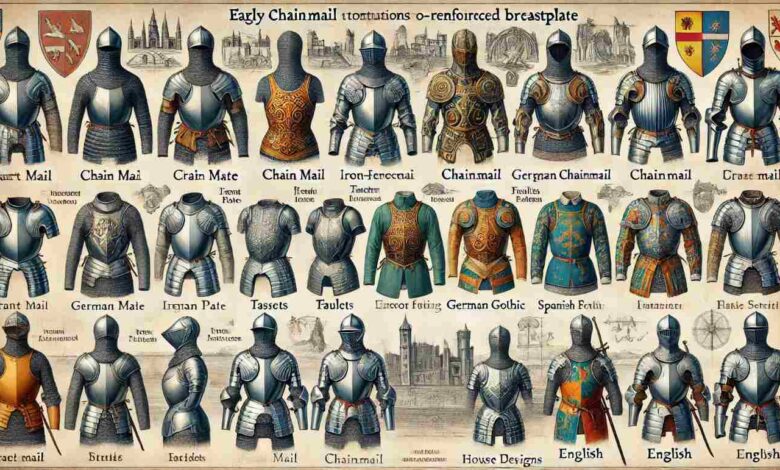
A breastplate is more than just armor it represents the ingenuity and artistry of ancient warfare. Initially crafted to shield the chest and vital organs, the breastplate evolved across different eras and regions to become an essential component of medieval battle gear. Its design reflects both the needs of war and the artistic tendencies of the time, marrying functionality with aesthetics.
Evolution of the Breastplate
Chain mail made from interlocking metal rings was in use during the early medieval times by knights and soldiers for lack of a better alternative as it provides flexibility and basic protection. But, as weapons evolved, limitations of chainmail were realised which led them to move on plate armor.
This slowly evolved into the first breastplates, with metal plates reinforcing chainmail to cover weak areas of defence throughout the 13th century. Initially, those armour types were made from iron or bronze, and they only covered some portion of the chest. As time progressed, these plates grew more and more until the 15th century when full breastplates were being used. This later type, taller and made of steel, came with flutes that aided in deflection and provided greater mobility.
When plate armor was at its peak form, during the 15th and early 16th centuries, breastplates covered all or part of body areas from neck to waist. It was common for knights to use cuirasses in combination with other pieces of armour such as a backplate, faulds, and tassets for full upper-body protection. This marked the evolution of utilitarian armor to a blend between practical defense and aesthetic fashion.
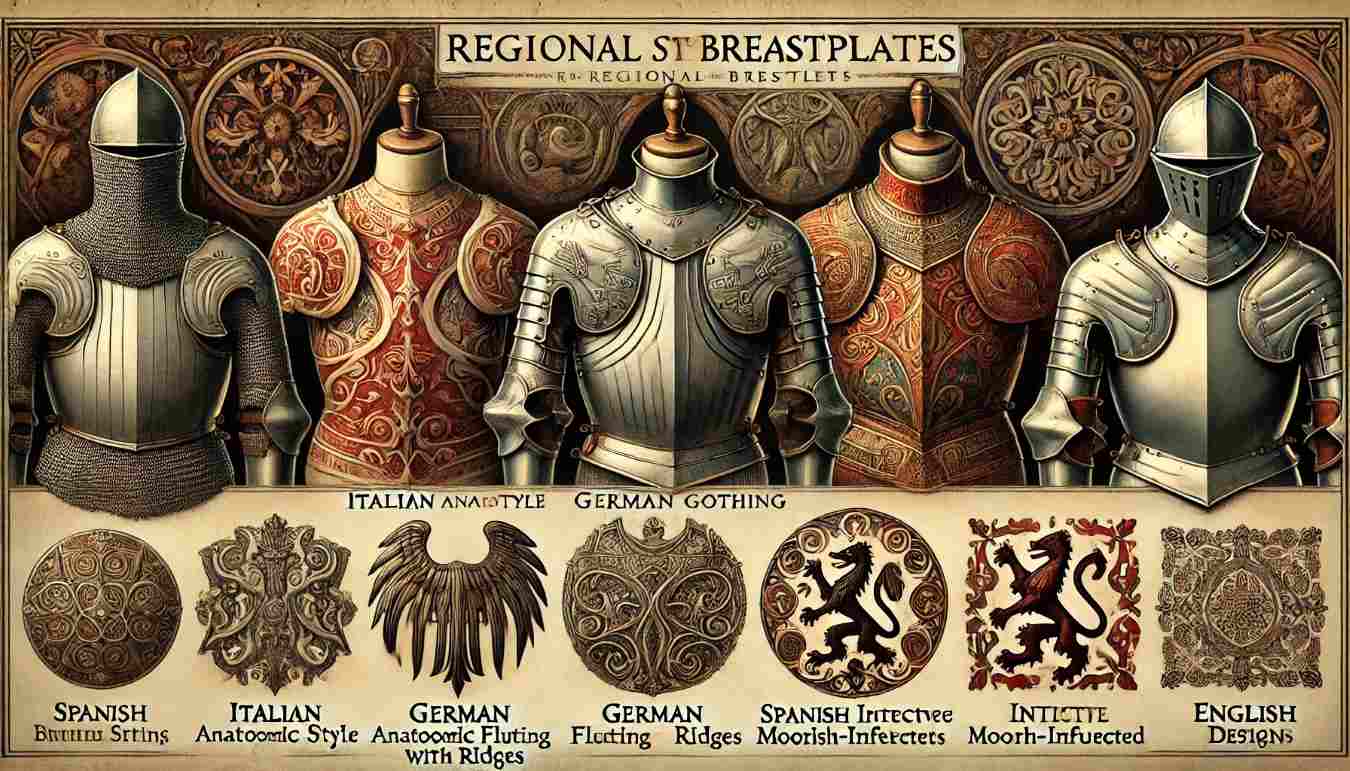
Regional Styles
The armor was not uniform across Europe but displayed distinct regional characteristics, reflecting both military necessity and cultural preferences.
Italian Style: Renowned for anatomical designs, Italian armor mimicked the structure of the human chest, achieving both practicality and remarkable style.
German Style: Influenced by Gothic aesthetics, German breastplates incorporated fluting and ridges, which added visual appeal and enhanced durability by deflecting strikes.
Spanish Style: Spanish armor drew heavily from Moorish designs, combining intricate patterns with practical function. These breastplates were more than protective gear; they symbolized individuality and regional heritage.
English Style: English breastplates prioritized practicality over ornamentation. Their simple yet effective designs made them highly favored by knights and soldiers for their functionality in battle.
This diversity in styles shows how breastplates were not only forged for the battlefield but also shaped by regional aesthetics and evolving technology.
Craftsmanship and Materials
Medieval breastplates were made by expert hands and from the best materials available. Steel offered just the right amount of rugged strength without posing the risk of breakage on the battlefield. Blacksmiths used methods such as dishing or raising to shape the metal into concave and convex forms, making the armor both protective and comfortable.
In turn, these armorers were essentially artists. Many breastplates featured intricate carvings, inscriptions, or embellishments of gold and silver. To reinforce noble identity, it was common for breastplates to display house marks or personal emblems of lords and knights alike.
The next part: Why the Breastplate Is Now an Iconic Element of Medieval Armor. Check back for part 2, where we will outline the components of a breastplate and explore its relevance and legacy in history both during warfare and beyond.
Components of the Medieval Breastplate
Breastplates such as these were actually a whole-system protection with connected parts which helped turn an armor from just-a-chest-cover to advantageous kit for battle.
Front Plate: This is the main component, covering the chest area including vital organs. Made from steel for absorbing and deflecting the impact of weapons, some designs were plain with no added decorations, while others featured patterns and motifs reflecting the wearer’s status or personality.
Back Plate: Connected to the front plate, this piece acted as a protective cover for the spine and shoulders. Both sections were often hinged or strapped together to ensure a snug fit without restricting movement.
Tassets: These armor plates hung from the lower edge of the breastplate, shielding the upper thighs and hips. Tassets provided extra protection without limiting the knight’s leg movements, essential for mounted warriors.
Faulds: Worn at the waist, faulds consisted of overlapping metal lames, allowing flexibility while protecting the lower torso. They typically attached to the underside of the cuirass, making the armor adaptable to the wearer’s shape and movements.
Cuirass: A cuirass was a complete breastplate and backplate set, combined with tassets and faulds. This design ensured full upper-body defense, enabling knights to withstand the crushing blows of battle.
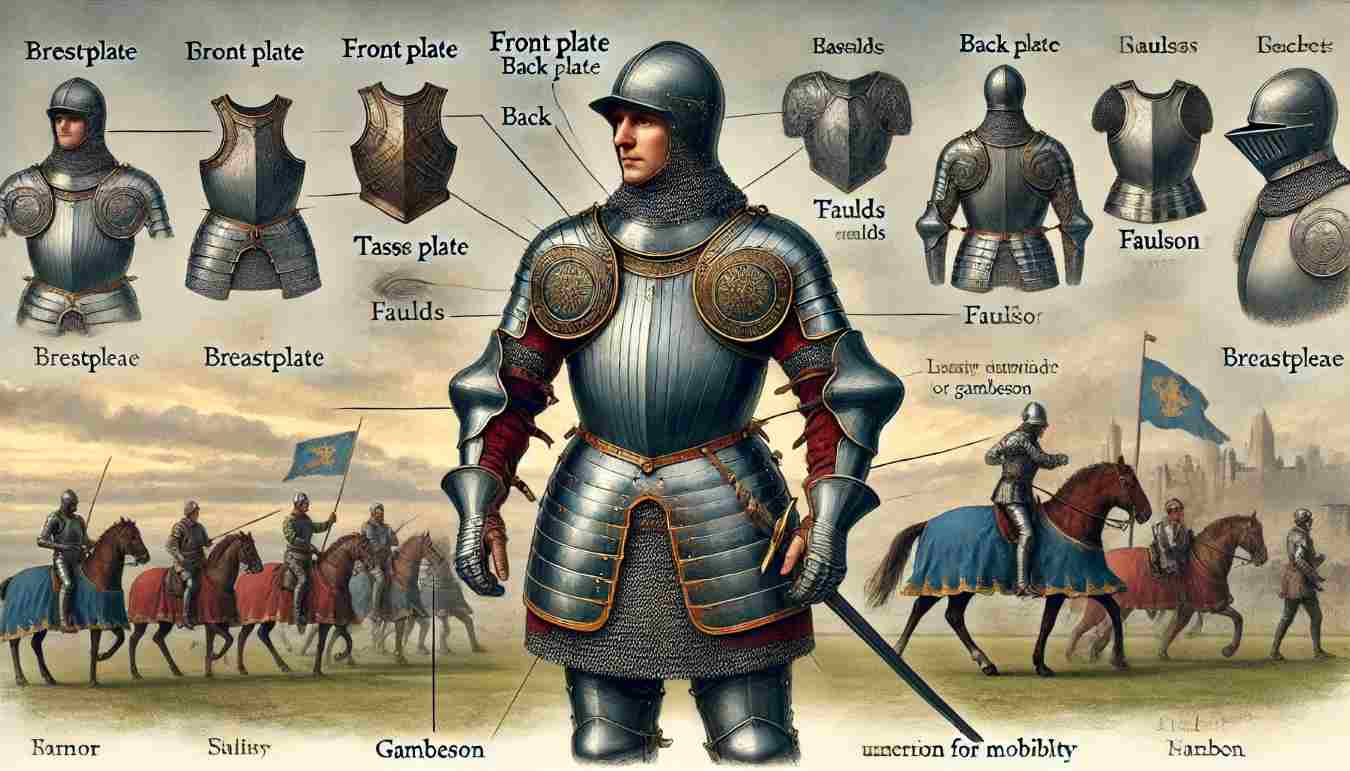
Practicality and Weight
Although protection was essential, the breastplate had to be of a weight that allowed for manoeuvrability in battle. A typical breastplate from the medieval period could weigh anywhere between 8 and 15 pounds (3.6 to 6.8 kg) depending on thickness, size and style etc. Early versions were heavier than later steel types, as metallurgy and shape of the plates used improved to provide maximum protection with less weight.
Knights often wore gambesons underneath their armor to cushion strikes. It also distributed the weight of the breastplate so that it did not restrict movement essential to both foot soldiers and mounted warriors. Elsewhere, articulated faulds and tassets allowed the wearer to move without compromising protection.
Cultural and Symbolic Significance
The breastplate obviously had the main function of protecting, but it also was symbolic. For a lot of knights it was like wearing their own spirit. Many nobles chose to have their breastplates coat of arms with emblazoned and show off a symbol which reflected or told about who they really are. The incredibly accurate weapons drove others, which included intricate designs or ceremonial inscriptions, therefore becoming status symbols during duels and matches.
And in certain circumstances the breastplate held religious significance as well. Before that, references in the Bible to a “breastplate of righteousness” emphasised protection not only from physical harm but spiritual as well. The symbolic meaning that it carries assured us, the breastplate was more than just a weapon for war but represented faith and honor.
Legacy of the Breastplate
Breastplate even impacts much later than the medieval period. Its design philosophy lives on in everything from bulletproof vests to parade dress uniforms. Medieval armourers demonstrated great skill and artistry in crafting breastplates, which people can find today in reenactments or historical exhibitions.
Today, you can enjoy the legacy of that breastplate in museums and archaeological finds such as those at Jamestown that tell us much about their styles of armor. In addition to this, models of these ancient breastplates have continued to excite fans and scholars alike. You will find a number of enthusiasts who always want replicas produced, with the classic plate armor continuing to fulfill the desire to connect with medieval warfare.




